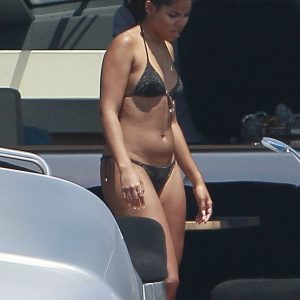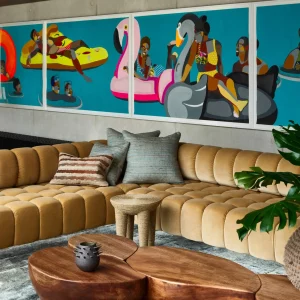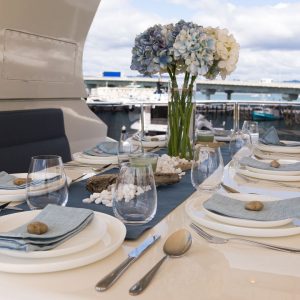As we take a step back in time, the year is 1969, a period when bigger was perceived as better, especially in the medium standard segment. Chrysler, the American automotive giant, was upholding this maxim by unveiling a completely redesigned fleet of full-sized cars, with a particular emphasis on the ever-popular Newport Series. The 1969 Newport was indeed larger than its predecessor, but did it deliver a better experience for its users? This comprehensive vintage review examines this iconic model, its specifications, and its performance in the market.
The Rise of the “Fuselage Design”
The model year 1969 was the last time the Big Three – General Motors, Ford, and Chrysler – simultaneously rolled out major restyling of their full-sized cars. Chrysler, however, took a bold step in terms of design, introducing a concept that Chief Designer Elwood Engel termed the “Fuselage Design”. This design was said to resemble the rounded body of an airplane, but with its curving sides and a massive flat hood and rear deck, the car was more akin to an aircraft carrier.
This new design was a significant departure from the crisply chiseled, concave-sided 1968 Chrysler. The 1969 Fuselage Chrysler appeared puffy and soft, suggesting that it was undergoing a few too many aesthetic enhancements.
Size and Styling: A Comparative Analysis
Despite the rich design, the 1969 Chrysler was dimensionally close to its medium standard competitors. However, it was the styling that set it apart. While competitors like the Oldsmobile Delta 88 employed various styling techniques to visually disguise their size, Chrysler flaunted its bulk. Additionally, both Ford and GM full-sized cars were transitioning towards the “longer hood/shorter rear deck” styling made popular by the Pony Cars. Chrysler, however, maintained the old-fashioned “long hood/long deck” style from the mid-1960s.
Performance and Quality: The Road Test Review
To provide a holistic view of the Newport’s performance, we refer to the May 1969 review by Road Test Magazine. Even though they attempted to compliment the Fuselage design, comparing it to a lean look was a bit of a stretch. They also pointed out one glaring downside to the fuselage styling: the massive door cross-sections that resulted in considerable wasted space.
The Newport was praised for its ability to perform well in the unusually wet weather experienced in Southern California during the test period. However, the power windows, radio, and climate control ceased functioning until things dried out, which could be an issue in wet, humid markets.
Despite the new Fuselage body being paired with the carry-over C-Body chassis, Chrysler had compromised the handling precision previously associated with Mopar products. The ’69 Newport now exhibited the same listing and wallowing characteristics as its competitors in the Medium Standard segment.
The robust 383 2V V8 engine was an impressive feature, delivering the performance buyers expected at the time. However, the workmanship quality was a letdown, with sloppy trim, unfinished seams, and messy finishes. Unfortunately, this was a trend during this period, and Mopar products were notorious for poor workmanship.
Safety Features
In terms of safety, the 1969 Chrysler Newport came with standard features for the time, which included lap safety belts for all passengers, a padded dashboard, and a dual braking system. Optional safety equipment included front shoulder belts and a rear window defogger.
The Legacy of the 1969 Chrysler Newport
In the grand scheme of automotive history, the 1969 Chrysler Newport serves as a symbol of the late 1960s’ design ethos, where size and styling were paramount. The car’s unique fuselage design was a daring move that set it apart from its competition, albeit with mixed reception.
Despite falling short in terms of sales performance and build quality, the 1969 Chrysler Newport holds a certain charm for vintage car enthusiasts. Its distinctive design and the sheer audacity of its size make it a head-turner even today, more than half a century after it was first introduced. The ’69 Newport is a testament to a time in automotive history when carmakers were willing to take big risks with their designs, a quality that is often nostalgically looked upon in the modern era of car design.
Market Performance and Conclusion
Despite the bold new styling and size, Chrysler’s Medium Standard offerings did not perform as well as expected in the market for 1969. Sales for the restyled Newport (and the related Dodge Polar/Monaco) actually decreased compared to 1968, while most revamped Medium Standard competitors experienced a substantial sales surge.
The Fuselage Chryslers did not do any favors for the corporation. The sales gap with rivals would only widen in the years that followed, as Mopar’s full-sized fortunes continued to decline. The Fuselage Chrysler turned out to be more of a flop than a soaring success, much like the infamous Spruce Goose aircraft.
In conclusion, the 1969 Chrysler Newport, with its larger-than-life size and conspicuous design, certainly turned heads. However, it failed to match up in terms of performance, quality, and market acceptance, marking a bittersweet chapter in Chrysler’s rich automotive history.





